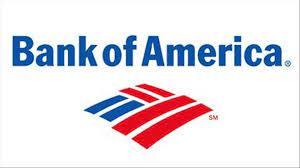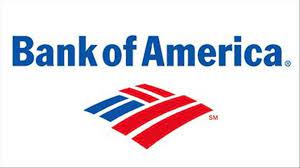
On Monday, Bank of America Corp reported a nearly 34 per cent reduction in second-quarter earnings, owing to a drop in investment banking revenue as dealmaking activity was a fraction of last year's record levels.
Wall Street investment bankers were neck-deep in acquisitions last year, but activity has slowed in the first half of 2022 due to capital market volatility, geopolitical tensions, and a risk-off mood that has swept across markets internationally.
Profit applicable to common shareholders decreased to $5.93 billion, or 73 cents per share, for the fiscal quarter ended June 30, from $8.96 billion, or $1.03 per share, the previous year.
Bank of America's investment banking fees plunged 47 per cent to $1.1 billion in the reporting quarter, as stock market listings were halted and firms slowed dealmaking.
Net of interest expenditure, revenue increased by 6% to $22.7 billion in the third quarter.
The Federal Reserve of the United States has been swiftly raising interest rates in order to combat decades of excessive inflation. Though recession dangers remain, for the time being, the shift has resulted in better earnings for banks, which normally flourish in a high-interest-rate environment.
Net interest income at Bank of America increased 22 per cent, or $2.2 billion, to $12.4 billion, a metric that quantifies the difference between interest collected on loans and the amount paid out on deposits.
Because of the makeup of its balance sheet, BofA is the most susceptible among large U.S. banks to changes in interest rates.
"Our U.S. consumer clients remained resilient with continued strong deposit balances and spending levels," Chief Executive Officer Brian Moynihan said.
Consumers' fortitude is being tested by inflation, which has reached levels not seen in four decades, but spending trends are still holding up, boosting the bank's profit.
Spending patterns are important markers of consumer financial health and are directly linked to the performance of BofA's crown jewel, its consumer banking segment, which saw revenue rise 12 per cent to $9.1 billion in the second quarter.
Over the previous quarter, the bank's combined credit and debit card spend increased 11 per cent to $220.5 billion. This figure was also up 10% year on year.
Bank of America reported average deposits of more over $1 trillion, a 10% increase over the previous year.
Total loans and leases at BofA increased 14 per cent year on year, excluding those from the government's Paycheck Protection Program. This percentage was also up 4 percent from the previous quarter.
However, the Fed's aggressive approach to lowering inflation has put the outlook for loans in jeopardy, since rapidly rising borrowing prices have the potential to harm demand.
Bank of America, the second-largest bank in the United States by assets, released $48 million in reserves in the third quarter, compared to $2.2 billion the previous year, leaving its total loan loss provisions at $500 million.
In comparison, JPMorgan Chase & Co and Wells Fargo & Co increased their loss provisions by $428 million and $235 million, respectively, in the third quarter.
Bank of America's stock, which has down roughly 28 percent this year, was flat in premarket activity.
(Source:www.usnews.com)
Wall Street investment bankers were neck-deep in acquisitions last year, but activity has slowed in the first half of 2022 due to capital market volatility, geopolitical tensions, and a risk-off mood that has swept across markets internationally.
Profit applicable to common shareholders decreased to $5.93 billion, or 73 cents per share, for the fiscal quarter ended June 30, from $8.96 billion, or $1.03 per share, the previous year.
Bank of America's investment banking fees plunged 47 per cent to $1.1 billion in the reporting quarter, as stock market listings were halted and firms slowed dealmaking.
Net of interest expenditure, revenue increased by 6% to $22.7 billion in the third quarter.
The Federal Reserve of the United States has been swiftly raising interest rates in order to combat decades of excessive inflation. Though recession dangers remain, for the time being, the shift has resulted in better earnings for banks, which normally flourish in a high-interest-rate environment.
Net interest income at Bank of America increased 22 per cent, or $2.2 billion, to $12.4 billion, a metric that quantifies the difference between interest collected on loans and the amount paid out on deposits.
Because of the makeup of its balance sheet, BofA is the most susceptible among large U.S. banks to changes in interest rates.
"Our U.S. consumer clients remained resilient with continued strong deposit balances and spending levels," Chief Executive Officer Brian Moynihan said.
Consumers' fortitude is being tested by inflation, which has reached levels not seen in four decades, but spending trends are still holding up, boosting the bank's profit.
Spending patterns are important markers of consumer financial health and are directly linked to the performance of BofA's crown jewel, its consumer banking segment, which saw revenue rise 12 per cent to $9.1 billion in the second quarter.
Over the previous quarter, the bank's combined credit and debit card spend increased 11 per cent to $220.5 billion. This figure was also up 10% year on year.
Bank of America reported average deposits of more over $1 trillion, a 10% increase over the previous year.
Total loans and leases at BofA increased 14 per cent year on year, excluding those from the government's Paycheck Protection Program. This percentage was also up 4 percent from the previous quarter.
However, the Fed's aggressive approach to lowering inflation has put the outlook for loans in jeopardy, since rapidly rising borrowing prices have the potential to harm demand.
Bank of America, the second-largest bank in the United States by assets, released $48 million in reserves in the third quarter, compared to $2.2 billion the previous year, leaving its total loan loss provisions at $500 million.
In comparison, JPMorgan Chase & Co and Wells Fargo & Co increased their loss provisions by $428 million and $235 million, respectively, in the third quarter.
Bank of America's stock, which has down roughly 28 percent this year, was flat in premarket activity.
(Source:www.usnews.com)





